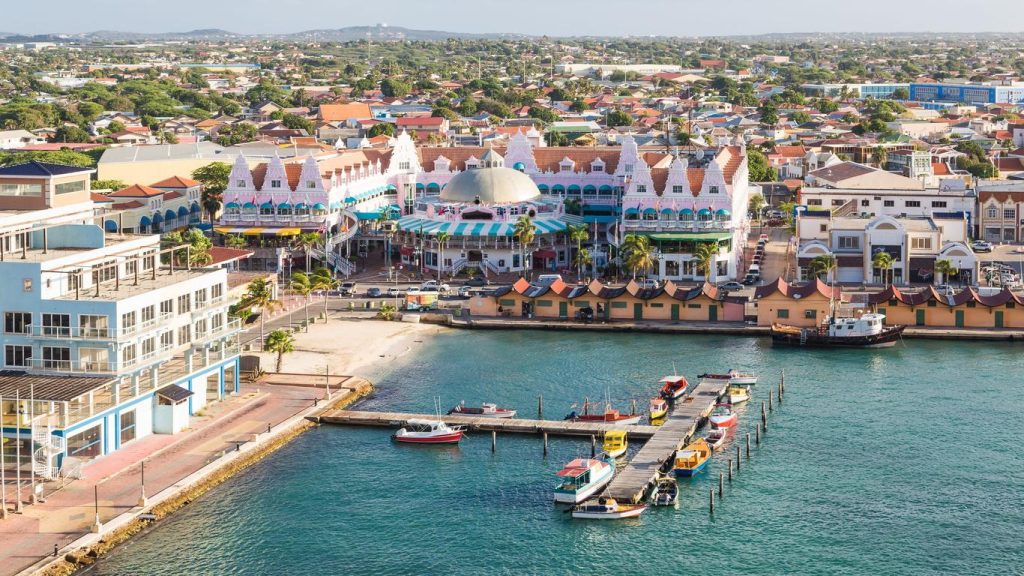The Ultimate Aruba Family Guide
Planning a trip to the “One Happy Island” with kids? This Aruba family guide is your one-stop hub for everything family-friendly—from the best calm-water beaches and animal encounters to kid-approved restaurants and where to stay. Whether you’re bringing toddlers or teens, we’ve got you covered.

Jump To:
- Top Things to Do
- Best Beaches
- Snorkeling with Kids
- Popular Activities
- Where to Eat
- Regions Overview
- Top-Ranked Family Stays
- Local Tips
- Getting Around
- Best Time to Visit
- What to Pack
Top Things to Do
Aruba is an adventure playground for families, offering everything from desert landscapes to vibrant marine life. Kids can meet rescued animals, explore natural bridges in Arikok National Park, or simply enjoy the endless water sports. With so many interactive and outdoor activities, there’s never a dull moment.
- Arikok National Park: Explore caves, see natural pools, and discover unique desert terrain.
- The Butterfly Farm: A magical experience for all ages, walking among thousands of exotic butterflies.
- Donkey Sanctuary Aruba: A heartwarming visit where kids can feed and pet rescued donkeys.
- De Palm Island: An all-inclusive day trip with a water park, snorkeling, and banana boat rides.
Best Beaches for Kids
Aruba’s beaches are world-famous for their powdery white sand and incredibly calm, shallow turquoise waters—perfect for families. Whether you want to relax under a palapa, try paddleboarding, or let toddlers splash safely in the surf, these beaches are what Caribbean dreams are made of.
- Eagle Beach: Famous for its wide shores and iconic Fofoti trees, with gentle waves.
- Baby Beach: Exceptionally shallow and calm, like a natural pool ideal for toddlers.
- Palm Beach: Bustling with activity, calm waters, and plenty of amenities and restaurants.
Top Ranked Family Stays
From sprawling all-inclusive resorts in the High-Rise hotel area to boutique hotels and condos in the Low-Rise section, Aruba has lodging for every family style. Many properties feature kids’ clubs, multiple pools, and easy beach access, ensuring a comfortable and stress-free stay.
- Palm Beach (High-Rise): Action-packed area with large resorts and tons of activities.
- Eagle Beach (Low-Rise): Quieter and more relaxed, with spacious boutique hotels and condos.
- All-Inclusive Resorts: Many options available that cater specifically to families with kids’ clubs and activities.
Snorkeling with Kids
Aruba’s clear, calm waters make it an ideal destination for introducing kids to snorkeling. Many of the best spots are accessible right from the shore, with minimal waves and abundant fish. From shallow coves to a famous shipwreck, families can explore the underwater world with ease.
- Boca Catalina: A popular, calm bay with easy walk-in access and lots of colorful fish.
- Malmok Beach: Shallow waters over rocky ledges where parrotfish and angelfish are common.
- Tres Trapi: A tiny cove famous for the sea turtles that frequent the area.
Popular Activities
Where to Eat
Aruba’s dining scene is incredibly family-friendly, with options ranging from fun toes-in-the-sand restaurants to casual spots for fresh seafood and Dutch pancakes. Many restaurants offer kid-friendly menus, high chairs, and a relaxed atmosphere where families are always welcome.
- Zeerovers: A super casual, local favorite where you eat fresh-caught fish right on a dock.
- The Dutch Pancakehouse: Serves up giant, delicious Dutch pancakes with sweet and savory toppings kids love.
- Passions on the Beach: For a memorable “toes-in-the-sand” dining experience at sunset.
- MooMba Beach Bar & Restaurant: Very casual, right on the beach with plenty of space for kids.
Regional Breakdown
Each area in Aruba offers a different vibe. The main tourist areas are concentrated in the west and southwest, known for their calm beaches and amenities. Knowing the difference can help you choose the perfect home base for your family’s vacation style.
- Palm Beach (High-Rise Area) – Bustling, lots of action, big resorts, calm waters.
- Eagle Beach (Low-Rise Area) – More relaxed, wider beaches, boutique hotels and condos.
- Oranjestad – The capital city, with cruise ships, shopping, and colorful Dutch architecture.
Local Tips
- Drive on the right side of the road.
- The tap water is high-quality and safe to drink everywhere on the island.
- Currency is the Aruban Florin, but USD is accepted everywhere; most places take credit cards.
- Standard U.S. power plugs and voltage.
- The trade winds are nearly constant, which keeps the island cool but means you need to hold onto your hat!
Best Time to Visit
Aruba is located outside the hurricane belt, making it a great year-round destination. The peak season is from December to April when the weather is driest. The off-season (May-November) often sees lower prices and fewer crowds, with consistently warm weather and only occasional, brief showers.
Getting Around
A rental car is highly recommended for families to explore the island at their own pace, especially for reaching places like Arikok National Park and Baby Beach. Taxis are widely available but can be costly. The main tourist areas are very walkable, and there’s a fun, free streetcar that runs through downtown Oranjestad.
What to Pack
- Reef-safe sunscreen and rash guards
- Snorkel sets or water shoes for rocky areas
- Light hiking shoes or closed-toe sandals
- Stroller if traveling with toddlers (hotel areas are very walkable)
- Books, games, and beach toys
- Bug spray and sun hats
We hope you found this Aruba family guide useful. For more general travel info, visit the Wikivoyage page on Aruba.
